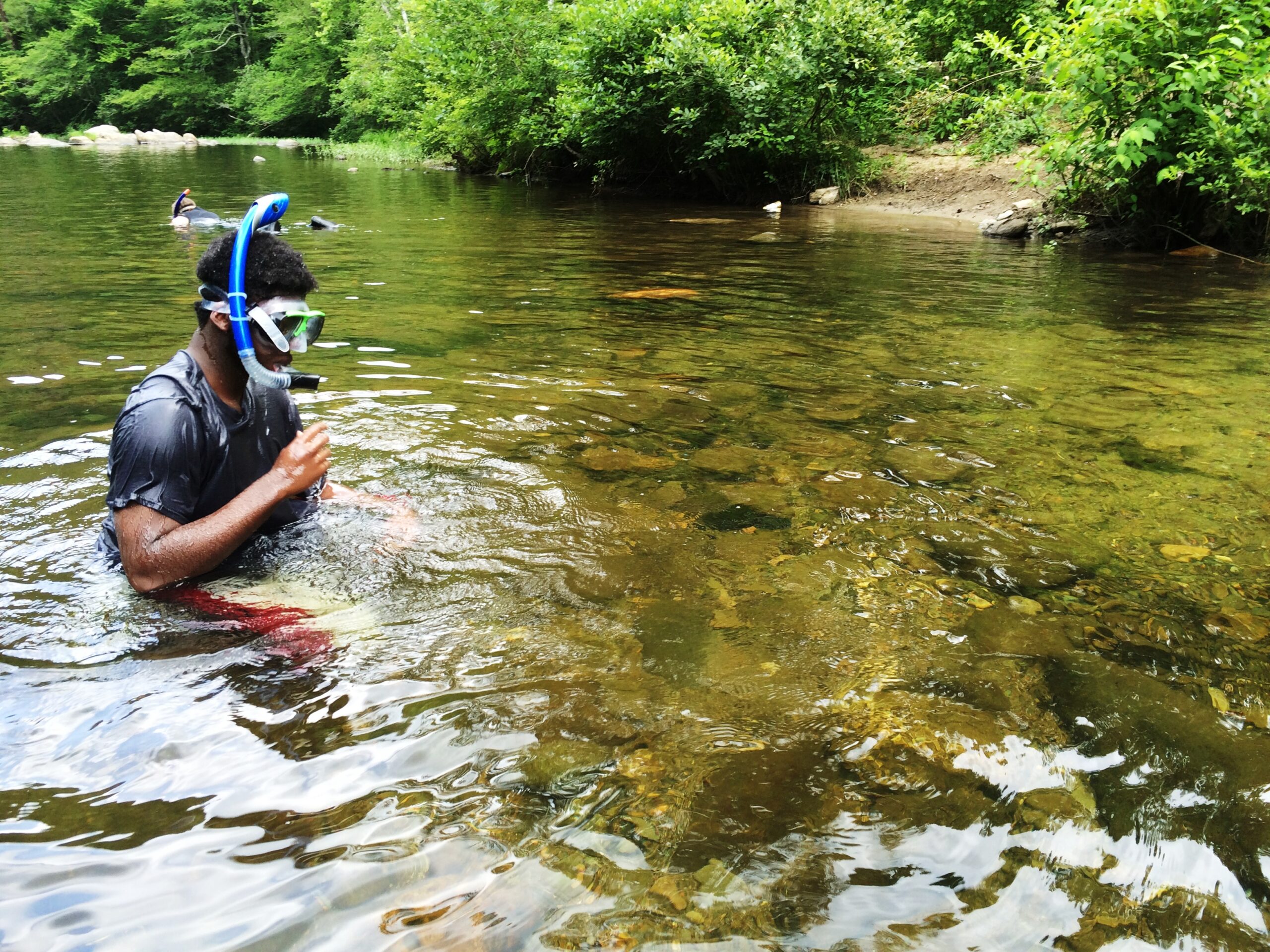A lot of people think that there’s not a lot to see in freshwater streams, lakes, or rivers. And this is because the ocean has dominated our attention when it comes to seeing and admiring the beings that live underwater.
But, did you know that there’s a hidden world below the surface of the U.S’s freshwater streams, lakes, and rivers? A world is full of amphibians, freshwater mammals, and colorful fish. And you can witness all types of fish behaviors such as hunting, migrating, mating and all the beauty of freshwater marine life by freshwater snorkeling. In fact, you might even see some beavers, river otters, crustaceans, and turtles.
What is Freshwater Snorkeling?
Freshwater snorkeling is when you explore freshwater bodies such as lakes, rivers, and streams. It is an activity where you wear a pair of goggles with large lenses, a mask, and a snorkel that allows you to breathe while you’re underwater. You can also wear a pair of fins just like what you wear when snorkeling in the ocean, it can help you swim through the water more efficiently. In fact, snorkeling is one of the best ways to explore the underwater life because you don’t need to bring so much equipment with you. This activity has been gaining popularity because of the infinite beauty that is waiting to be explored.
Things You Should Remember When Going Freshwater Snorkeling
Learn how to swim and snorkel safely in freshwater currents or across small rapids by following these safety tips:
- Plan Your Swim and Trip – The first important thing you should remember is to plan your trip. Always make sure that you inform a friend or a relative that you’re going on a trip and let them know exactly where you’re going. They should also know what time you expect to return from your trip.
- Scout Ahead – This means stopping at a safe location to evaluate the river before you go snorkeling. Scout above and below the water level to identify any potential hazards before you go snorkeling.
- Prepare All the Essentials – Make sure that you are well prepared for your freshwater snorkeling trip. This means packing enough food and water before your head on out. Take note that cold water can drain your energy very quickly. Also, you need to stay hydrated to help prevent muscle spasm and swim cramps.
- Have a Swim/Snorkeling Buddy – Always have a snorkeling buddy and remember to stay close with them in the water. This means that if they get out of the water, you should get out too. Swimming alone in rivers, lakes, and streams can be quite unpredictable that’s why the buddy system is important.
- Wear Protective Gears – There is a lot of protective snorkeling equipment that is available in the market today. These gears such as neoprene booties, a good snorkel set, and a high-density wetsuit help reduce injuries when you’re in the water and prevents slips and slides on rocks and pebbles.
The Best Places to Go Freshwater Snorkeling
Crystal River in Florida
If you want to see and swim with manatees, then you should head on down to Crystal River in Florida. This river runs only seven miles long but it has over 30 natural springs and streams. With only a mask and snorkel, you can witness over 350 manatees interact with one another in their natural habitat. The best part of this is the manatees are not shy and they sometimes come over for a gentle nuzzle.
Lake Mead in Nevada/Arizona
Lake Mead is located just outside of the Las Vegas strip and it is the largest water reservoir in the United States. There are a lot of greats spots here that you can explore with your mask and snorkel, and is a great place to learn how to bass fish! In fact, some of the beaches here have life jacket rental stations so that you can snorkel safely. If you follow one of the canyons to the edge of the lake, you will be able to find quiet and calm streams where you can explore tadpoles, minnows, and other young lake creatures that like to stay on the shallow side of the water to avoid being eaten by their predators.
Huron River in Michigan
Huron River is over 900 square miles and 130 miles long. It has over a hundred of smaller streams that are flowing into it which makes this a freshwater snorkeler’s paradise. The best ways to explore this river is by starting in the upstream of Ann Harbor where the water tends to be clearest. Here you can expect to find rock bass, catfish, trout, sunfish, turtles, carp, and other freshwater creatures.
Bailey’s Harbor in Wisconsin
This is a large harbor that is located near the entrance of Green Bay and here you can snorkel through many of the streams that go into the bay. You can also swim around the Boaz shipwreck which is a vessel that ran aground in 1900. This is now covered by plant life, barnacles, and serves as a home for juvenile fish.
Kankakee River and Haigh Quarry in Illinois
This river was once used by fur traders, Native Americans, and farmers for fishing and navigation. But today, you can explore this river and expect to see some walleye, smallmouth bass, catfish, and northern pike by snorkeling in the river’s flatwater areas and streams. And if you look closely, you might be able to find some arrowhead that is hidden among the pebbles.
These are the tips and location suggestions that you can follow and explore if you want to experience some freshwater snorkeling yourself.

